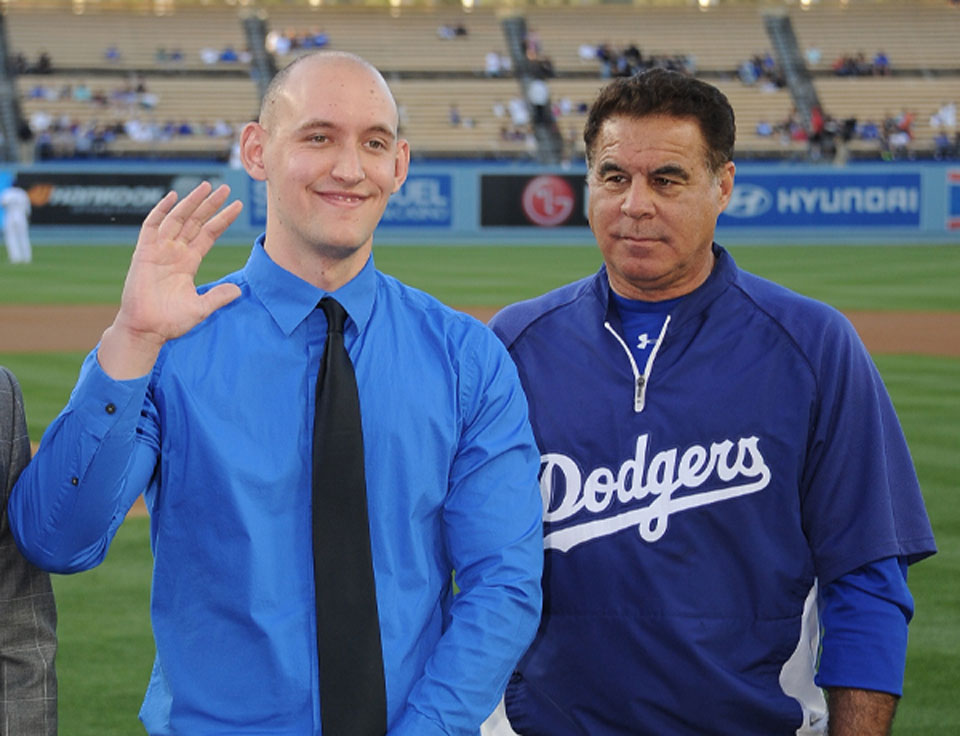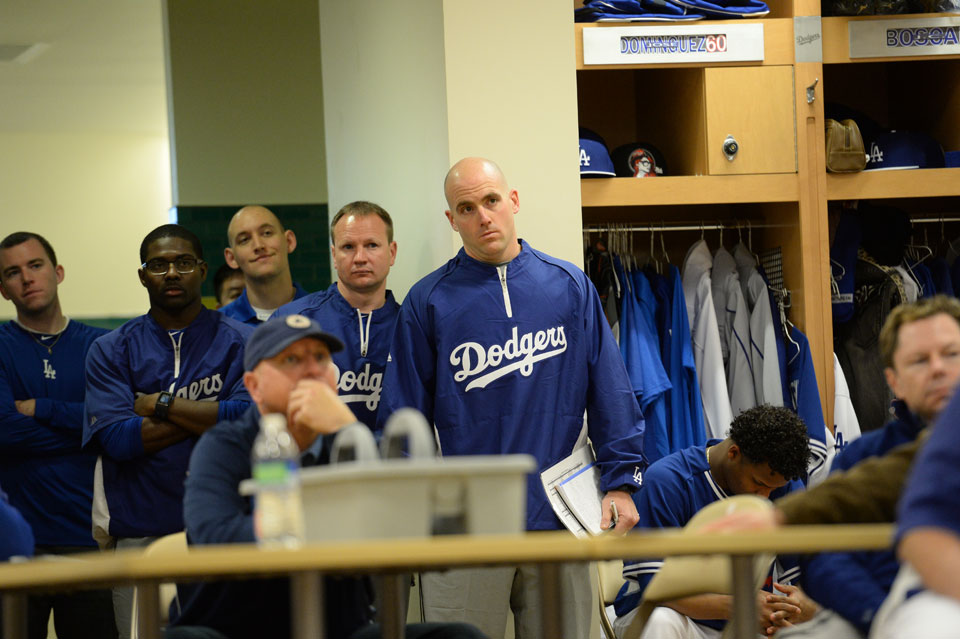Training Ground in Dodger Blue
Several years ago, during orientation for California State University, Northridge’s renowned physical therapy graduate program, Tyler Dorrel M.S. ’14 (Physical Therapy) set a goal that would stay with him throughout his time in the program.
He was in a classroom, listening to physical therapy professor Aimie Kachingwe talk about what lay ahead for the students. She mentioned that CSUN had recently started a partnership with the Los Angeles Dodgers and the family of Roy Campanella, the Hall of Famer whose career was cut short by a car accident that left him paralyzed. The partnership called for one CSUN physical therapy student to be selected to serve as an intern with the Dodgers’ medical staff during spring training at the team’s facilities in Glendale, Arizona. The intern would work under the supervision of Stan Conte M.S. ’78 (Physical Therapy), the Dodgers’ director of medical services and a graduate of CSUN’s physical therapy program, as well as alongside the rest of the team’s training staff.
Dorrel, a kinesiology graduate of Sacramento State, saw his future in the Dodgers’ internship, and immediately researched what the prerequisites were for selection. He sought out other internships in preparation for the internship with the Dodgers. In the summer of 2013, when it came time to apply, he was ready. Eventually he interviewed with Conte, and around the time the Dodgers qualified for that year’s playoffs, Dorrel was selected for the program.
“There are very few opportunities in baseball for physical therapists, and those opportunities are even fewer for physical therapy students,” Dorrel said. “For CSUN to have a program set up to work specifically with the Dodgers, to have a physical therapy student work with them for two months plus of spring training, it’s a really excellent program. To my knowledge there’s not really anything else like it in the country.”
“The CSUN/Dodgers/Campanella partnership is truly one of a kind,” Kachingwe said. “Although nationally there may be one or two physical therapy schools that send students to intern in Major League Baseball, I’m not aware of another program where the P.T. student gets to spend eight weeks working and living with the Dodgers’ medical staff in their spring training camp. This experience allows the student to gain firsthand knowledge of what it truly takes to work in professional sports.
“Tyler was the perfect student for this internship. His diligence, hard work, knowledge and professionalism were the perfect ingredients for a successful outcome with this rigorous internship. We couldn’t be more proud of him, and know that the Dodgers’ internship will help propel him forward into a very successful career.”
Dorrel’s appointment as a member of the Dodgers’ training staff began in early February. He would often start his days at 5:30 a.m. at a staff meeting to discuss the day’s workload and which players needed specialized treatment for injuries. With more than 60 players in Major League camp and minor leaguers reporting to camp in March, there were often plenty of players to work with, both rehabilitating injuries and needing a helping hand to get in their regular work. Any starstruck feelings from being around famous baseball players quickly faded.
“When I was helping out with physicals the first day that players reported, I remember distinctly a couple times when players walked in, I’d think, ‘That’s Clayton Kershaw. That’s Matt Kemp,’” Dorrel said. “You get over it pretty quickly when you get to talking to these guys and you see that they’re just here to work and focus on their jobs, their careers. Really, they’re all pretty down-to-earth guys. They’re not these larger-than-life superstars who are unapproachable. They’re just regular guys who are blessed to be good at baseball and are working on their craft.”
Even with the early mornings, the days would be long — often lasting 12 hours or more. And there are no off days for the training staff. Even on the rare occasions when the team would have a scheduled day off, there would still be about a half dozen or so Dodger players who were receiving treatment to rehabilitate injuries.
That daily work proved to be a great training ground for Dorrel. The demands of taking the athletes from competition to evaluation to treatment is often nearly instantaneous, and can test the skills of even the most seasoned medical professional.
“In baseball, when a guy comes off the field with an injury, you have to see him five minutes later,” Dorrel said. “It makes you think very quickly as far as evaluating what kind of injuries they have going on — what it is and what it could not be. You have to make a quick decision in what they have to do that day, or the next several days, to recover.
“It tests your knowledge and makes you think quickly on your feet and act upon it. Being able to work in that kind of setting, it tests you, but it also built my confidence that I’m able to come to decisions on the spot and put everything together quickly.”
Dorrel also learned quite a bit from Conte, one of the most respected medical practitioners in professional sports, both in treatment and research.
“Getting the chance to work with him, to see how he works his craft every day, and to see how the other trainers and physical therapists are always focused on learning more, their dedication and work ethic — it was amazing,” Dorrel said. “To see how they operate and how they work is just a great experience in itself.”
Once he finished his internship with the Dodgers, Dorrel earned his board certification. He is now a licensed physical therapist and is looking ahead to a long-term position in orthopedics. He followed the Dodgers throughout the peaks and valleys that made up the 2014 season, with so many players achieving peak performance thanks to the medical staff.
“In baseball, there are demands getting guys back to top performance,” Dorrel said. “Some of the things that you get to experience out there, the day-to-day working with these guys and seeing them get back to playing, it’s very rewarding feeling like you’re helping the team. There’s a team aspect to working in that environment that I wasn’t able to achieve in other settings.”



 experience
experience